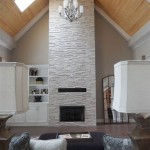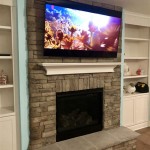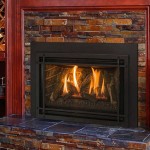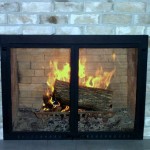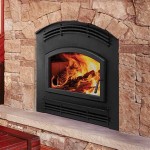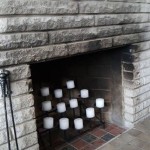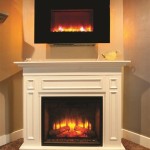Gas Log Fireplace Insulation: Ensuring Safety and Efficiency
Gas log fireplaces offer a cozy and efficient way to heat a home, creating a warm and inviting ambiance. However, just like any other heating appliance, safety and energy efficiency are paramount. Proper insulation around the fireplace is crucial to prevent heat loss, minimize fire hazards, and ensure optimal performance. This article will explore the importance of gas log fireplace insulation, the different types available, and the key benefits of installing it.
Understanding the Importance of Insulation
Gas log fireplaces generate significant heat, which can be lost if not properly contained. Without proper insulation, heat can escape into surrounding areas, resulting in reduced efficiency and increased energy bills. Additionally, inadequate insulation can lead to fire hazards, as surrounding materials may become overly hot and ignite. Insulation acts as a barrier, preventing heat from escaping and protecting the surrounding structure from fire.
Types of Gas Log Fireplace Insulation
Several materials are commonly used for gas log fireplace insulation, each offering unique properties and benefits. Some of the most popular options include:
1. Ceramic Fiber
Ceramic fiber insulation is a highly effective material known for its excellent heat resistance and durability. It is typically used in the form of blankets or boards and is often installed directly behind the fireplace. Ceramic fiber is also lightweight, making it easy to handle and install.
2. Mineral Wool
Mineral wool insulation is another common choice, offering good thermal performance at a relatively affordable cost. It is typically available in batts or rolls, making it versatile for different installation needs. Mineral wool is also resistant to mold and mildew growth, making it suitable for humid environments.
3. Vermiculite
Vermiculite is a natural, lightweight material that is effective at insulating and absorbing moisture. It is often used in loose form and can be poured or blown into the space behind the fireplace. Vermiculite's high thermal resistance and moisture absorption properties make it ideal for areas with high humidity.
Benefits of Gas Log Fireplace Insulation
Installing proper insulation around a gas log fireplace offers numerous benefits, including:
1. Enhanced Energy Efficiency
Insulation effectively reduces heat loss, ensuring that more of the heat generated by the fireplace is directed towards the room being heated. This leads to improved energy efficiency, reducing energy consumption and minimizing heating costs.
2. Increased Safety
Insulation acts as a barrier, preventing excessive heat from reaching surrounding materials, reducing the risk of fire hazards. It also helps to prevent the fireplace from becoming a source of heat that could damage nearby furnishings or belongings.
3. Improved Performance
By preventing heat loss, insulation allows the fireplace to operate more efficiently, producing more heat and better performance. This results in a more comfortable and enjoyable experience for homeowners, especially during cold weather.
4. Reduced Noise Levels
Insulation can also help to reduce noise levels from the gas log fireplace, creating a more peaceful and relaxing environment. This is particularly beneficial for homeowners who use their fireplace frequently or in close proximity to living areas.
In conclusion, while gas log fireplaces offer a convenient and cozy heating solution, proper insulation is essential for optimal safety, efficiency, and comfort. The various types of insulation available, each with its unique characteristics, offer options for different needs and budgets. Investing in proper insulation is a smart decision that can enhance the overall performance and longevity of your gas log fireplace.

Vermiculite Granules For Gas Logs Coarse Fireplace

Glowing Embers For Fireplace Mother Daughter Projects

Is It Safe To Put Insulation Behind A Gas Fireplace Ehow

Keith Porter Insulation Fireplaces

How To Install A Gas Log Fireplace Ask This Old House

Small Gas Logs Reduced Depth Vented And Ventless

Keith Porter Insulation Fireplaces

How To Clean A Gas Log Fireplace Ina Comfort Air

Gas Fireplace Service Repair Frederick Md Installation

Can I Install Gas Logs In My Existing Fireplace Thomas Bros Propane

